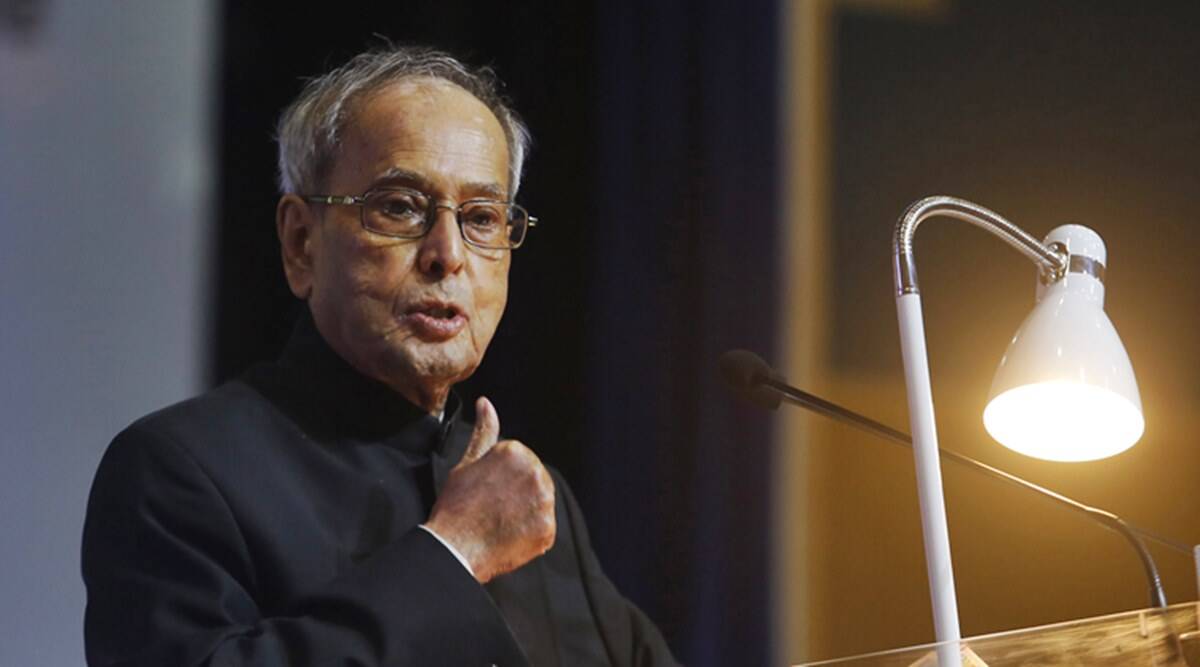
Former President Pranab Mukherjee passed away on Monday. Mukherjee, 84, had undergone a brain surgery at the Army Research and Referral hospital earlier this month, and was on ventilator support. He had also contracted Covid-19.
In his long political career, Mukherjee served as an MP seven times. Before becoming the President of India in 2012, he had at different points of time been the chief whip of the Congress Parliamentary Party, and an important minister in various Cabinets.
 After Rajiv was assassinated, Narasimha Rao became Prime Minister, and Mukherjee was appointed the deputy chairman of the Indian planning commission and subsequently, in 1995, the External Affairs minister.
After Rajiv was assassinated, Narasimha Rao became Prime Minister, and Mukherjee was appointed the deputy chairman of the Indian planning commission and subsequently, in 1995, the External Affairs minister.
EXPRESS ARCHIVES | Pranab Mukherjee passes away: See rare pictures
Mukherjee almost became the Prime Minister of India twice – after the assassination of Indira Gandhi in 1984, and after Sonia Gandhi refused the top post in 2004. While that did not happen, Mukherjee continued to serve the Congress party and government in other roles.
Sad to hear that former President Shri Pranab Mukherjee is no more. His demise is passing of an era. A colossus in public life, he served Mother India with the spirit of a sage. The nation mourns losing one of its worthiest sons. Condolences to his family, friends & all citizens.
— President of India (@rashtrapatibhvn) August 31, 2020
For a brief period, he did quit the Congress to start his own party, the Rashtriya Samajwadi Congress (RSC), in West Bengal in 1986. However, three years later, the party merged with the Congress after Rajiv Gandhi and Mukherjee arrived at a compromise.
Entry into politics
Mukherjee was first noticed by Siddhartha Shankar Ray, former Bengal CM, when he was serving as V K Krishna Menon’s election agent in the 1969 Midnapore by-election. Ray recommended him to Prime Minister Indira Gandhi, who later gave the 35-year-old Mukherjee a Rajya Sabha seat. Soon, he was known to have Indira’s ear and became a minister of state in her government.
Maharashtra Congress leader Prithviraj Chavan wrote in The Indian Express: “Pranabda is very good at keeping secrets. In fact, Indiraji used to say, “Whenever Pranabda is given any confidential information, it never comes out of his belly. What comes out is only the smoke from his pipe.”
Mukherjee stood steadfast with Indira throughout the Emergency and the splitting of the Congress. His rough patch in the Congress started after Indira’s assassination, when he was sidelined in the PM race and Indira’s son Rajiv Gandhi took over. In the parliamentary elections held in December 1984, Congress won a massive mandate. Mukherjee found no place in Rajiv Gandhi’s cabinet. This was when he left the Congress, but later came back.
After Rajiv was assassinated, Narasimha Rao became Prime Minister, and Mukherjee was appointed the deputy chairman of the Indian planning commission and subsequently, in 1995, the External Affairs minister.
In 1997, when Sonia Gandhi finally became a member and a year later president of the Congress party, Mukherjee played a big role in mentoring her.
Chavan writes: “In Dr Manmohan Singh’s cabinet, Pranabda was the de facto number two. He was the chairman of more than 95 GoMs and EGoMs (Empowered Group of Ministers)… Pranabda worked under three Prime Ministers – Indiraji, Narasimha Rao and Dr Manmohan Singh. He is the only finance minister to have presented budgets both before the 1991 reforms in the license-permit raj regime as well after the 1991 economic reforms. He took bold decisions after the global economic crisis of 2008 which helped shield the Indian economy.”
Mukherjee’s tenure as President of India continued after Narendra Modi became Prime Minister in 2014. In 2018, after he had vacated Rashtrapati Bhavan, Mukherjee attended an RSS event as chief guest, a move criticized by many in his party, including his daughter and Congress leader Sharmistha Mukherjee.
In January this year, as India faced massive protests against the citizenship law and the proposed NRC, Mukherjee had said “democracy thrives on listening, arguing and even dissent”, and that the “present wave” of largely peaceful protests will once again help deepening India’s democratic roots